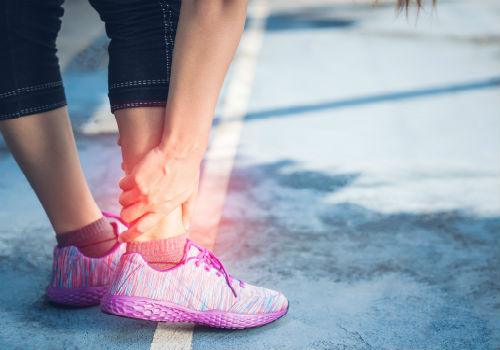
The Achilles tendon is the largest tendon in the body and connects the two muscles of the calf to the bone in the heel. You use the Achilles tendon every time you walk, run or jump, but this means it is prone to injury. To reduce the severity of tendon injuries it is important to understand Achilles tendonitis causes and treatment options.
Types of Achilles tendonitis
There are two distinct types of Achilles tendonitis: insertional and non-insertional.
Non-insertional tendonitis typically affects younger, active peoplects and impacts the fibers in the middle area of the tendon.
Insertional tendonitis occurs where the tendon connects to the bone and is associated with degeneration which is more often experienced by older individuals.
Causes and symptoms of Achilles tendonitis
As the Achilles tendon is responsible for a significant amount of mobility and weight-bearing activity, tendonitis usually occurs from overuse or degeneration. Athletes often experience tendonitis when increasing the amount of intensity of their exercise regime or from not performing an adequate warm up before activity.
Tight and inflexible calf muscles can also contribute to tendonitis and is often experienced by women who wear high heels for prolonged periods or people who wear poorly fitting shoes.
Common treatments for Achilles tendonitis
1.Rest
Immediately following an injury to your Achilles tendon, the best course of treatment is to rest your leg in an elevated position and apply a cold pack. This reduces the severity of inflammation to the area and can prevent the injury from developing into Achilles tendonitis.
Rest the area as much as possible while the tendon heals. You may need to use crutches to move around and immobilize the area with a sports bandage to avoid reinjuring the area.
2. Hot and cold therapy
An effective treatment for Achilles tendonitis is to use hot and cold therapy. Cold packs should be applied first to minimize inflammation followed by heat packs to boost the blood flow around the area which will increase the nutrients available to the tissues and speed up the healing process.
3. Chiropractic manipulation
Chiropractic adjustments are used to stretch and lengthen tight calf muscles to help you regain mobility in the area. Your chiropractor may also use massage techniques or electric muscles stimulation to reduce tension in the muscles and break up scar tissue on the tendon.

4. NSAIDs
Over-the-counter anti-inflammatory medications can help treat the pain and tenderness associated with Achilles tendonitis. However this is not a permanent solution and will not heal the damaged tendon. If your symptoms persist for longer than a month after using the medications, consult your healthcare practitioner.
Final thoughts
Achilles tendonitis is a painful condition that limits your mobility, but you don’t need to live with the pain of tendonitis. There are several health care providers with whom you can discuss Achilles tendonitis causes and treatment options in West Bloomfield, MI that can help you repair your Achilles tendon to get you moving pain-free.


